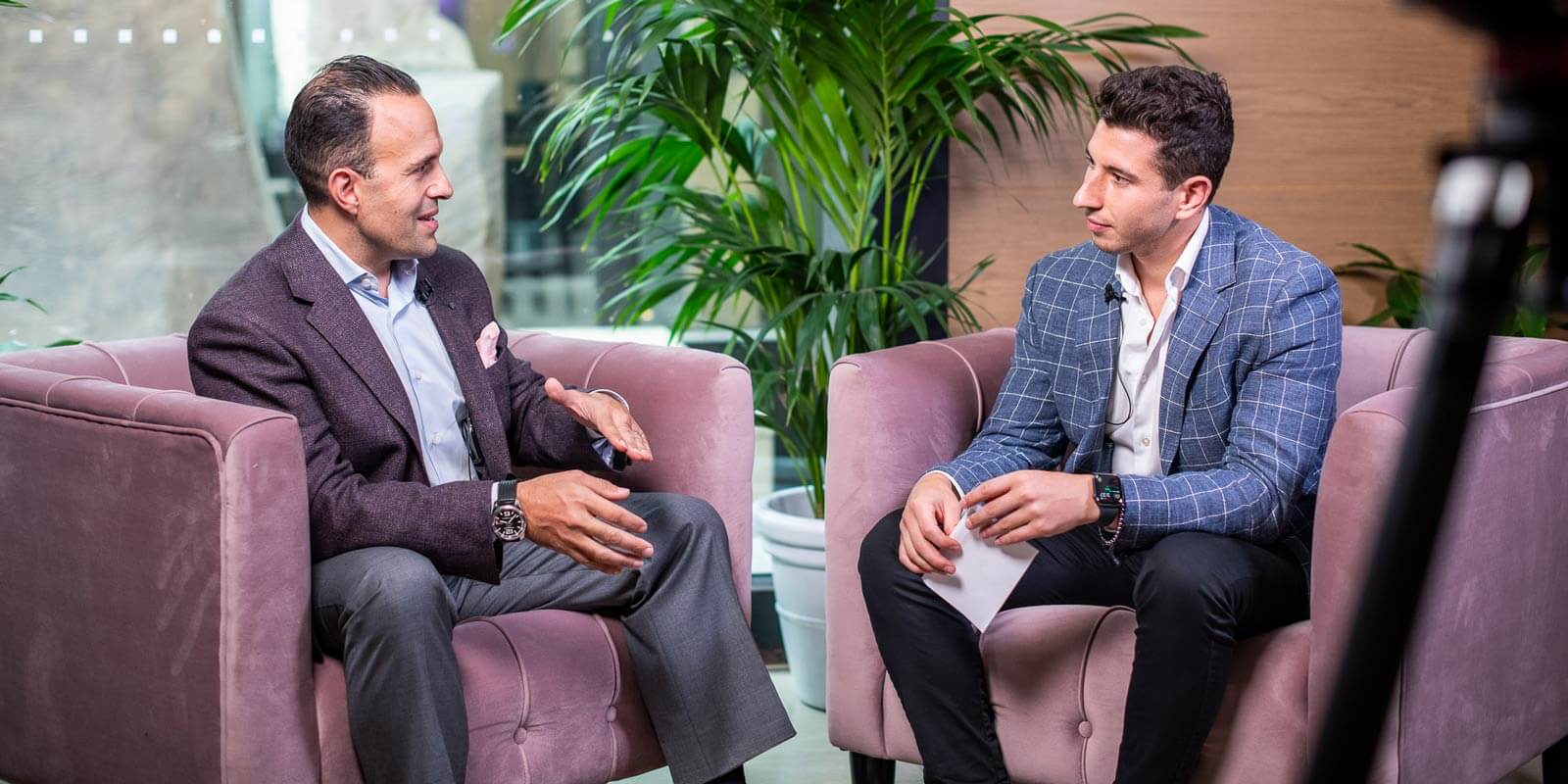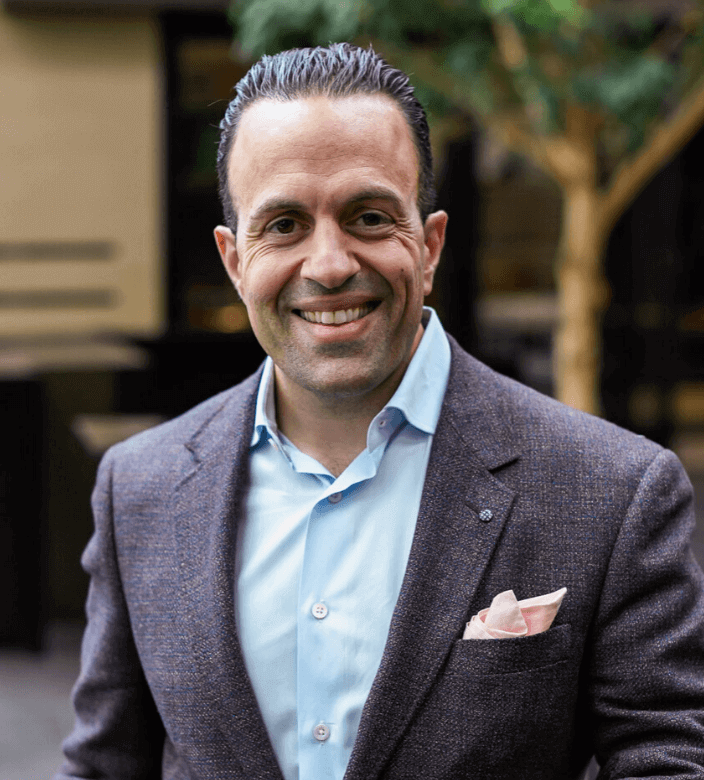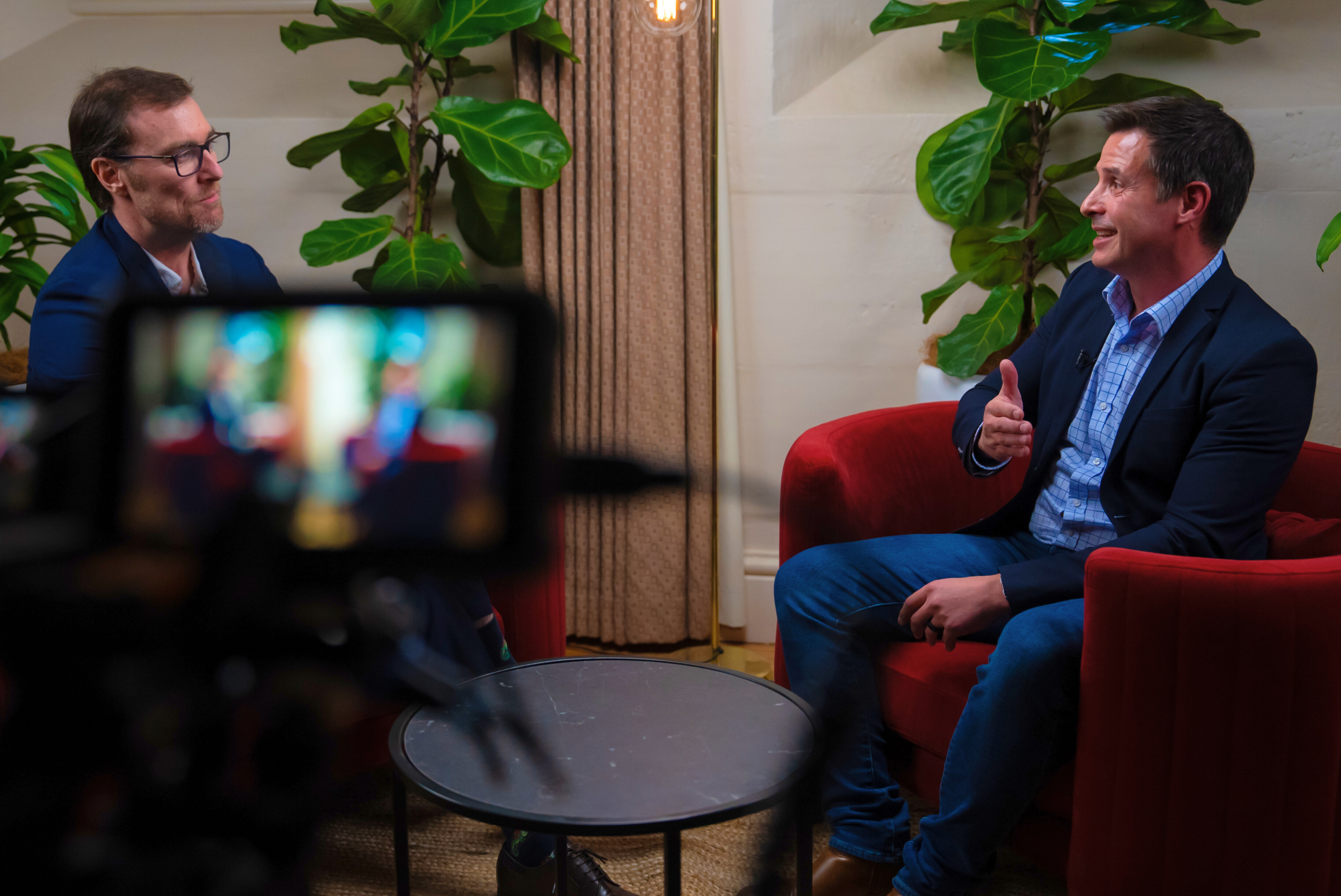University of Melbourne’s Director of Digital & Data Assyl Haidar spoke with ADAPT’s Director of Research and Advisory Practice Anthony Saba about the Core Competency of Executing a Data-Driven Strategy at ADAPT’s CIO Edge.
Assyl shares his top tips on innovating with data for a digital experience, aligning stakeholders when formulating a data strategy, and measuring the performance of these initiatives.
Anthony Saba:
So, thank you for joining us once again at CIO Edge. My first question for you is, what does executing on a data-driven strategy, one of our Core Competencies? What does that mean to your current role?
Assyl Haidar:
At the University of Melbourne, there’s a significant programme of work in and around data, and data as an asset, so I can only talk to part of that in response to your question. What it means to my role is, really, is probably in two parts.
One is, how do we work towards achieving faster benefits capture? Benefits realisation around digital transformation, and how do we know that we’re actually progressing at the pace and you really need. Obviously, data is the driver of that.
It’s the driver of understanding whether, whatever it is you are testing, is being adopted and is more in the direction of being customer-centred, etc. But, there’s another really important part of our thinking at the university on this topic, and it goes to the heart of social licence.
And increasingly, our ability to innovate, and our ability to explore data in new and exciting ways, is directly linked to how much trust we maintain with our community, and what we do, and how transparently we’re using that data and having a good dialogue around it with our community.”
Anthony Saba:
It’s a hard journey, building that trust. I mean, it takes time.
Assyl Haidar:
That’s right.
Anthony Saba:
And it’s very quick to lose, as we’ve seen recently with some unfortunate things that have happened to Australian organisations.
How do you go about it? The performance metrics are interesting to me. You mentioned you used the data to measure the actual performance of some of these initiatives.
It’s very hard to do. How do you KPI that? How do you metric that? How do you go about that within the university?
Assyl Haidar:
I actually picked a great piece of advice from Peter Weill when talking to him about this, and he was reminding me of the importance of having very clear outcome measures for transformation.
There’s a level at which you kind of have to be very clear, not just with your story around, where transforming from this to something else, but we’re going to measure progress and be accountable in the following ways, so, we do try to work hard at how we best frame that and how we best to measure it, and you’re right, it isn’t easy.”
But then, there’s a whole other set of layers to measure it at a tactical level, and each area that’s delivering needs to figure out those right measures that ladder up to that outcome.
For example, if you’re incubating and testing something, like a new digital interface, it stands to reason that: are people using it more often? Do they like it when they use it? Do they prefer it to other options?
Those are some of the very obvious indicators that you should either stop something, pivot or certainly move faster because it’s actually looking very promising, and we’ve got some great examples of that happening at the university.
Anthony Saba:
Excellent.
Assyl Haidar:
Including some things by the way that have stopped as a result of that data.
Anthony Saba:
When you look at how executives are leveraging different data strategies, they’ve got their architecture set up, what they’re doing with the data. Everyone goes about things in different ways, contextual to their organisation, their industry, and the kind of data they’re actually putting in.
To ask you how you’re achieving your kind of some of the things you just spoke to from a team structure perspective and execution perspective. Can you talk to that point?
That’s where we get a lot of questions around “how do we actually go about delivering or executing our data strategies?”

Assyl Haidar:
Any large and complex organisation, it’s very genuinely a team effort, and at the same time, it has to be very clearly led. We’ve got parts of the university that clearly lead, in the area of data strategy and platforming.
Then there’s the considerations around architecture, and the increasingly efficient integration of different systems, etc. Then you’ve got the actual using that data in new and exciting ways, and some of that is on the analytics level.
Then there are other parts that are around just being innovative and how we visualise data, and often, increasingly often it’s actually not in the way we might have used it before.
It’s less about a report in some cases and more around the really easy intuitive interface for example. Each of those needs different skills at the table.
Fortunately, there’s a great pool of skills available to draw on, but equally importantly it’s that coordinating layer that says, “Well, how do we make sure we’re prioritising our investments between keeping the lights on and the needs of today building the future as we go”, and in between there is that thing about maintaining the trust and making sure that we’re balancing innovation and ethics.
You might say it’s a luxury or you might say, it’s a special opportunity, but we get to draw on the academic expertise from when it comes to approaching those ethical issues and how to maintain trust because there’s a legal consideration, there’s an engineering one, there’s a sociological one.”
So, that’s a really rich source of insight that helps us, certainly doesn’t give the answers, but it makes sure that we’re, again, maintaining really quality conversation that then translates into practical policy-making prioritisation, guardrail, frameworks.
Anthony Saba:
Which types of sustainable products at the end of the day?
Assyl Haidar:
We found that there are some ways to make it more pragmatic and break it down. One simple way is simply, it is clear on what a more disruptive POC looks like, and how that needs to be treated differently from something that is very core to keeping the lights on today.
Because you just wouldn’t treat them the same way, it wouldn’t make sense. You don’t measure them. You don’t use the data in the same way.
Anthony Saba:
Absolutely. You mentioned that all of the work you’ve done and all the information you have, leading to creating new services, new exciting things, but it also told you that you should be stopping some things.
Do you have some examples around, because that’s interesting? What are some of the things that came to light Well, we’ve actually turned the tap off in a few areas and made some good choices based on the new information?
Assyl Haidar:
One very exciting example for us as a broad area, is around our understanding of spatial data, because the University of Melbourne, it’s a big physical place, it’s got multiple campus locations.
A lot of the experience is very tied up in a place that’s over 160 years old. t’s really important when we introduce digital things to be more focused on how we bring physical and digital together, then just create a digital experience disconnected from that. You can’t achieve that without really, innovative, new and innovative uses of data.”
One of the things that have emerged from when we did a quick scan across our university, we found that there was something like 37 concurrent projects happening all around the topic of spatial data. The answer wasn’t, “Okay, great. We need to stop all of those, instead of doing just one, it’s too complex a group.”
But there was the opportunity to actually say, “Maybe those two or three of you should come together. Maybe this one is not a standalone project, but actually, something that could feed some really valuable insights into how this next one is designed.”
That is leading to some sensible rationalisation there because what we are all agreeing on is that having better quality insights on the other end, having a better understanding, is not only important to how we use our spaces in our buildings, but it’s actually really important to placemaking. Once you get into that territory, that’s really exciting.
The other opportunity where we’re finding is where we’re having some prototypes succeeding really well and the user, some great digital and data some leading-edge approaches, is how we tell some of the stories about what the university does, using data.
An example of that is around our research and understanding our research capability and world-class prototyping and piloting to understand what can be as many as 30,000 concurrent research initiatives and thousands and thousands and thousands of publications coming off there.
But being able to use the data to understand the relationship between those things and how we can better unlock the impact that on societies. It’s a very exciting challenge.
Anthony Saba:
Absolutely.
Assyl Haidar:
Core to what the university’s mission is around increasing knowledge and applying that knowledge to make the world better.
 WATCH
10:31
WATCH
10:31




























